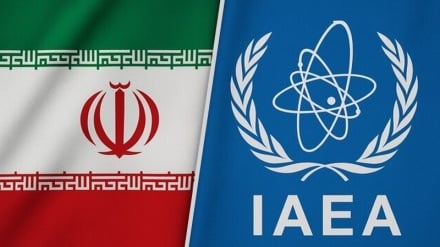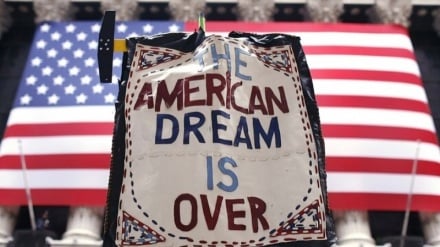The world is de-dollarizing
What if tomorrow nobody but the United States would use the US-dollar?
Every country, or society would use their own currency for internal and international trade, their own economy-based, non-fiat currency. It could be traditional currencies or new government controlled crypto-currencies, but a country’s own sovereign money. No longer the US-dollar. No longer the dollar’s foster child, the Euro. The world is de-dollarizing is the title of an informative analysis in this regard by Peter Koenig, an economist and geopolitical analyst, who is also a former World Bank staff and worked extensively around the world in the fields of environment and water resources.
No longer international monetary transactions controlled by US banks and – by the US-dollar controlled international transfer system, SWIFT, the system that allows and facilitates US financial and economic sanctions of all kinds – confiscation of foreign funds, stopping trades between countries, blackmailing ‘unwilling’ nations into submission. What would happen? – Well, the short answer is that we would certainly be a step close to world peace, away from US (financial) hegemony, towards nation states’ sovereignty, towards a world geopolitical structure of more equality.
We are not there yet. But graffities are all over the walls signaling that we are moving quite rapidly in that direction. And Trump knows it and his handlers know it – which is why the onslaught of financial crime – sanctions – trade wars – foreign assets and reserves confiscations, or outright theft – all in the name of “Make America Great Again”, is accelerating exponentially and with impunity. What is surprising is that the Anglo-Saxon hegemons do not seem to understand that all the threats, sanctions, trade barriers, are provoking the contrary to what should contribute to American Greatness. Economic sanctions, in whatever form, are effective only as long as the world uses the US dollar for trading and as reserve currency.
Once the world gets sick and tired of the grotesque dictate of Washington and the sanction schemes for those who do no longer want to go along with the oppressive rules of the US, they will be eager to jump on another boat, or boats – abandoning the dollar and valuing their own currencies. Meaning trading with each other in their own currencies – and that outside of the US banking system which so far even controls trading in local currencies, as long as funds have to be transferred from one nation to another via SWIFT.
Many countries have also realized that the dollar is increasingly serving to manipulate the value of their economy. The US-dollar, a fiat currency, by its sheer money mass, may bend national economies up or down, depending in which direction the country is favored by the hegemon. Let’s put the absurdity of this phenomenon in perspective.
Today, the dollar is based not even on hot air and is worth less than the paper it is printed on. The US GDP is US$ 21.1 trillion in 2019, with current debt of 22.0 trillion, or about 105% of GDP. The world GDP is projected for 2019 at US$ 88.1 trillion. According to Forbes, about US$ 210 trillion are “unfunded liabilities” net present value of future projected but unfunded obligations (75 years), mainly social security, Medicaid and accumulated interest on debt, a figure about 10 times the US GDP, or two and a half times the world’s economic output.
This figure keeps growing, as interest on debt is compounded, forming part of what would be called in business terms ‘debt service’ interest and debt amortization, but is never ‘paid back’. In addition, there are about one to two quadrillion dollars of so-called derivatives floating around the globe. A derivative is a financial instrument which creates its value from the speculative difference of underlying assets, most commonly derived from such inter-banking and stock exchange oddities, like ‘futures’, ‘options’, ‘forwards’ and ‘swaps’.
This monstrous debt is partly owned in the form of treasury bonds as foreign exchange reserves by countries around the world. The bulk of it is owed by the US to itself – with no plans to ever “pay it back” – but rather create more money, more debt, with which to pay for the non-stop wars, weapon manufacturing and lie-propaganda to keep the populace quiet and in lockstep.
This amounts to a humongous worldwide dollar-based pyramid system. Imagine, this debt comes crashing down, for example because one or several big Wall Street banks are on the brink of bankruptcy, so, they claim their outstanding derivatives, paper gold and other debt from smaller banks. It would generate a chain reaction that might bring down the whole dollar-dependent world economy. It would create an exponential “Lehman Brothers 2008” on global scale.
The world is increasingly aware of this real threat, an economy built on a house of cards – and countries want to get out of the trap, out of the fangs of the US-dollar. It’s not easy with all the dollar-denominated reserves and assets invested abroad, all over the globe. A solution may be gradually divesting them US-dollar liquidity and investments and moving into non-dollar dependent currencies, like the Chinese Yuan and the Russian Ruble, or a basket of eastern currencies that are delinked from the dollar and its international payment scheme, the SWIFT system. Beware of the Euro, it’s the foster child of the US-dollar!
There are increasingly blockchain technology alternatives available. China, Russia, Iran and Venezuela are already experimenting with government-controlled cryptocurrencies to build new payment and transfer systems outside the US-dollar domain to circumvent sanctions. India may or may not join this club. The logic would suggest that India orients herself to the east, as India is a significant part of the huge Eurasian economic market and landmass.
India is already an active member of the Shanghai Cooperation Organization (SCO) – an association of countries that are developing peaceful strategies for trade, monetary security and defense, comprising China, Russia, India, Pakistan, most Central Asian countries and with Iran waiting in the wings to become a full-fledged member. As such, SCO accounts for about half of the world population and a third of the world’s economic output. The east has no need for the west to survive. No wonder that western media hardly mention the SCO which means that the western average public at large has no clue what the SCO stands for, and who are its members.
Government-controlled and regulated blockchain technology may become key to counter US coercive financial power and to resist sanctions. Any country is welcome to join this new alliance of countries and new but fast-growing approach to alternative trading – and to finding back to national political and financial sovereignty.
In the same vein of de-dollarization are Indian “barter banks”. They are, for example, trading Indian tea for Iranian oil. Such arrangements for goods to be exchanged against Iranian petrol are carried out through Indian “barter banks”, where currencies, i.e. Iranian rials and Indian rupees, are handled by the same bank. Exchange of goods is based on a list of highest monetary volume Indian trade items, against Iranian hydrocarbon products, for example, Iran’s large import of Indian tea. No monetary transaction takes place outside of India, therefore, US sanctions may be circumvented, since no US bank or US Treasury interference can stop the bilateral trade activities.
Despite US and EU sanctions, German investments in Russia are breaking a 10-year record in 2019, by German business pouring more than €1.7 billion into the Russian economy in the first three months of 2019. According to the Russian-German Chamber of Commerce, the volume of German companies’ investments in Russia is up by 33% – by € 400 million – since last year, when total investments reached € 3.2 billion, the largest since 2008. Despite sanctions which amounted to about € 1 billion combined for 140 German companies surveyed and registered with the Chamber of Commerce, and despite western anti-Russia pressure, Russia-German trade has increased by 8.4 percent and reached nearly € 62 billion in 2018.
In addition, notwithstanding US protests and threats with sanctions, Moscow and Berlin continue their Nord Stream 2 natural gas pipeline project which is expected to be finished before the end of 2019. Not only is the proximity of Russian gas a natural and logical supply source for Germany and Europe, it will also bring Europe independence form the bullying sales methods of the United States. And payments will not be made in US dollars. In the long-run, the benefits of German-Russian business and economic relations will far outweigh the illegal US sanctions. Once this awareness has sunk in, there is nothing to stop Russian-German business associations to flourish, and to attract other EU-Russian business relations – all outside of the dollar-dominated banking and transfer system.
President Trump’s trade war with China will eventually also have a de-dollarization effect, as China will seek – and already has acquired – other trading partners, mostly Asian, Asian-Pacific and European – with whom China will deal in other than dollar-denominated contracts and outside the SWIFT transfer system. For example this may be done using the Chinese International Payment System (CIPS) which, by the way, is open for international trade by any country across the globe.
This will not only circumvent punishing tariffs on China’s exports (and make US customers of Chinese goods furious, as their Chinese merchandise is no longer available at affordable prices, or no longer available at all), but this strategy will also enhance the Chinese Yuan on international markets and boost the Yuan even further as a reliable reserve currency – ever outranking the US-dollar. In fact, in the last 20 years, dollar-denominated assets in international reserve coffers have declined from more than 90% to below 60% and will rapidly decline further as Washington’s coercive financial policies prevail. Dollar reserves are rapidly replaced by reserves in Yuan and gold, and that even in such staunch supporters of the west as is Australia.
Washington also has launched a counter-productive financial war against Turkey, because Turkey is associating and creating friendly relations with Russia, Iran and China – and, foremost, because Turkey, a NATO stronghold, has purchased the Russian S-400 cutting-edge air defense system – a new military alliance which the US cannot accept. As a result, the US is sabotaging the Turkish currency, the Lira which has lost 40% since January 2018.
Finally, investments of the Chinese Belt and Road Initiative (BRI), also called the New Silk Road, will be mostly made in Yuan and local currencies of the countries involved and incorporated in one or more of the several BRI land and maritime routes that eventually will span the globe. Some US-dollar investments may serve the People’s Bank of China, China’s Central Bank, as a dollar-divesting tool of China’s huge dollar reserves which currently stands at close to two trillion dollars.
The BRI promises to become the next economic revolution, a non-dollar economic development scheme, over the coming decades, maybe century, connecting peoples and countries – cultures, research and teaching without, however, forcing uniformity, but promoting cultural diversity and human equality – and all of it outside the dollar dynasty, breaking the nefarious dollar hegemony.
EA


